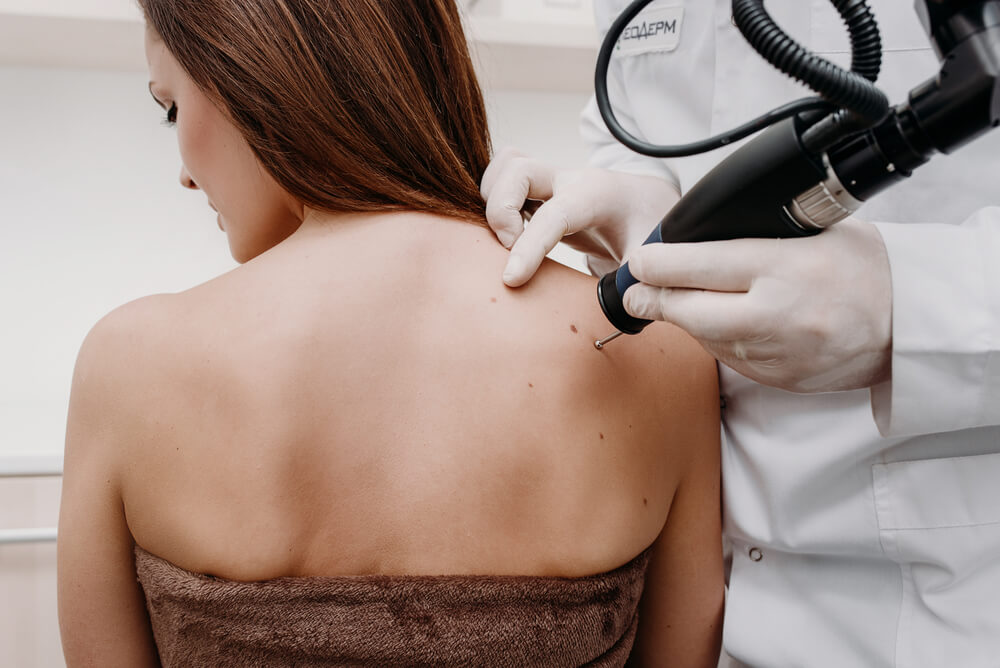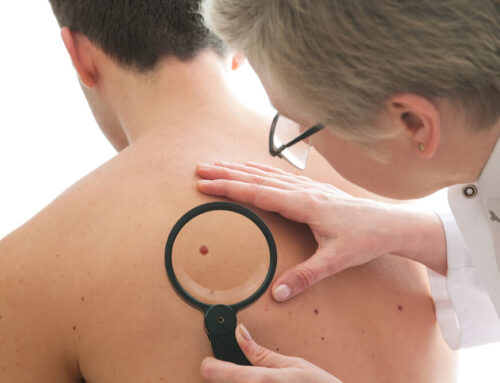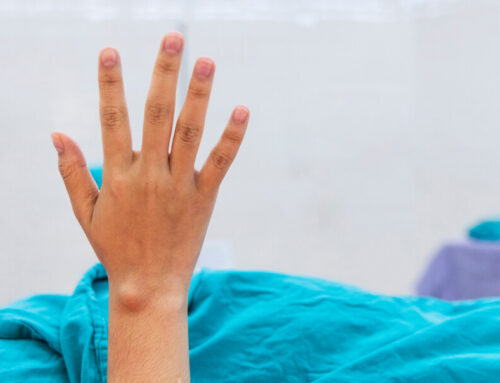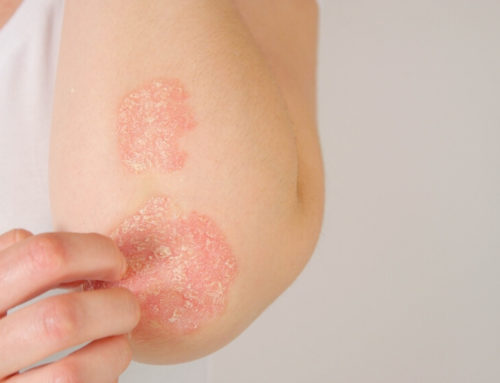A skin lesion is an area of the skin that has an abnormal appearance or growth. In other words, it feels and looks different from the skin around it. Everything from a bug bite (a very common type of skin lesion) to a blister could be described as a lesion. Lesions are sometimes caused by disease or inflammation, while in other cases they are inherited, e.g. birthmarks.
There are mainly two types of lesions: primary and secondary. Primary skin lesions refer to abnormal skin conditions that someone had since birth, or that he or she acquired during their lifetime. Secondary skin lesions happen when primary skin lesions are manipulated or irritated. If somebody, for example, scratches a mole until it starts bleeding, a crust will form. This is now a secondary skin lesion and warrants a visit to an expert on skin lesion in Palm Beach County.
The many types of lesions out there make it difficult to distinguish between a benign skin lesion and a potentially fatal one. A regular visit to an expert physician will remove all those worries and doubts.
Different Types of Skin Lesions
Many types of lesions could appear on someone’s skin throughout his or her lifetime. Below is a breakdown of a few of the most common ones.
Blisters
These are pockets of fluid just below the skin. They are often caused by allergies, burns, infections, skin diseases, or medication. The fluid that typically fills a blister is called serum – a liquid that helps to protect the underlying skin. Blisters can, however, also be filled with blood.
Blisters normally heal on their own in around two weeks. It’s important, however, not to irritate the skin further.
Moles
A mole is normally a benign skin lesion. They are very common: in fact, people sometimes have up to 40 moles. They typically become lighter or darker the older you get. Moles have a symmetrical, round shape and are slightly raised.
They are normally brown, but it’s not uncommon to see other tints including tan and colorless. Moles most often appear under your nails and on your scalp – but they can form just about anywhere on the skin.
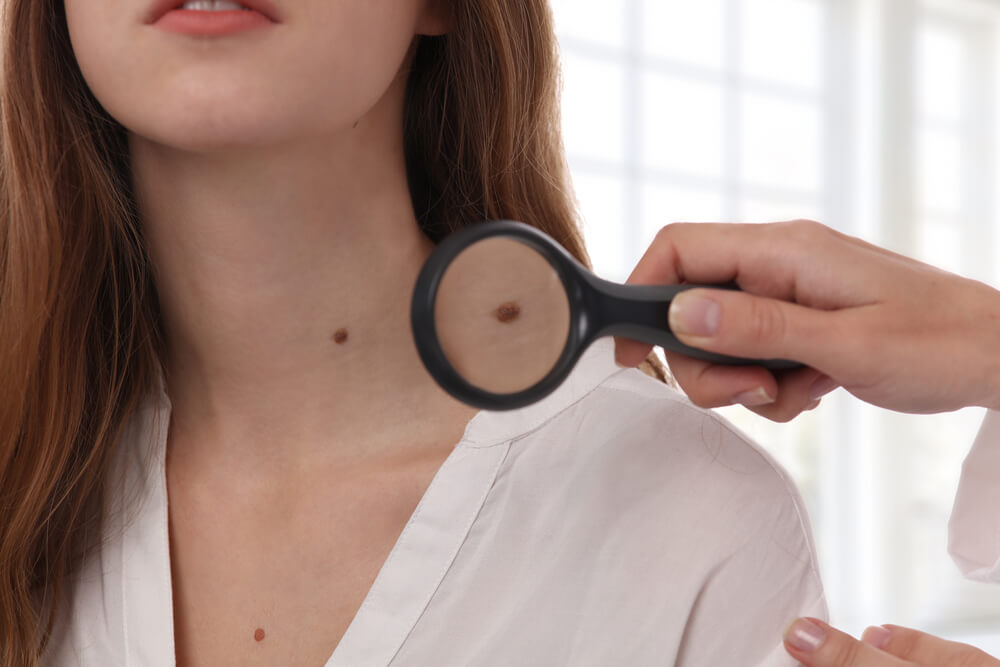
Warts
A wart is a benign skin lesion that is caused by a viral infection. Genital warts, flat facial warts, and plantar warts are all caused by one of the many HPV (human papillomavirus) strains. Although they normally disappear within a few months, they can be bothersome and painful. Some warts can benefit from home treatment but for other ones, you may need the help of an expert on skin lesion.
People often find it difficult to understand the differences between a wart and a mole. The main difference between a wart and a mole is their color. Moles are brownish, while warts are typically colorless. Another difference between a wart and a mole is that moles do not change a lot and grow slowly. They can grow hair and typically appear in areas that are exposed to the sun a lot. A final difference between a wart and a mole is that warts are rough to the touch and sprinkled with small blood vessels that appear like black pinpoints.
Lipoma
Fortunately, a lipoma is typically a benign skin lesion that consists of fat tissue. They can appear anywhere on the body but luckily it’s quite easy to remove them. This is generally done under local anesthesia by a doctor or an expert on skin lesion.
Actinic Keratosis
These skin lesions are considered precancerous, i.e. they could later become cancerous. AK is often mistaken for age spots, a rash, or a wound. Some actinic keratosis lesions even have a horn-like shape. On one’s lips, they might look like white sores or patches. They tend to grow on skin that was damaged by the sun over a long period of time.
Skin Cancer
Of all the different types of lesions, skin cancer is the most dangerous. Common types of skin cancer include:
- Squamous cell carcinoma. A well-defined, scaly, red, thick bump on your skin that could grow much bigger or bleed if not removed. They typically appear in those parts of the body that are heavily exposed to the sun, but they can also grow in skin ulcers and genital areas.
- Basal cell carcinoma. These might appear like a sore that just won’t heal. You will typically see a smooth bump that sometimes dips in the middle. They have small but visible blood vessels.
- Melanoma. This type of skin cancer is particularly aggressive. If left untreated, it can spread to other parts of your body.
- Merkel Cell Carcinoma (MCC) is a fairly rare kind of skin cancer. These lesions often form on parts of the skin that are frequently exposed to the sun, but they can also be found in other parts of the body. They first appear as a painless, firm bump that can be any color from violet or red to flesh tone. They grow bigger quickly over a couple of weeks or months. Anyone who has reason to believe that he or she has MCC should immediately consult a doctor or expert on skin lesion in Palm Beach County.
What Are Possible Causes of Skin Lesions?
Infections on the skin or sometimes in the skin are among the most common causes. A wart is a good example. The wart virus is transmitted from one individual to the next via direct skin contact. The herpes simplex virus, which causes not only genetic herpes but also cold sores, is transmitted in exactly the same way.
An infection that happens throughout someone’s body, i.e. a systemic infection, such as shingles or chickenpox, can give rise to lesions all over that person’s body. Cellulitis and MRSA are two potentially fatal infections that can also cause skin lesions.
Certain skin lesions, such as freckles and moles, are hereditary. Birthmarks are lesions that can be traced back to the time of birth. Others can be caused by allergic reactions, such a contact dermatitis and allergic eczema. Conditions like diabetes and poor circulation can result in skin sensitivity that can eventually lead to skin lesions.
Why Are Skin Lesions Significant?
Lesions on one’s skin can vary from totally benign to deadly. The majority of them are, however, somewhere in between. If you are bothered by issues such as rashes, skin tags, or blisters, you might want to visit your physician or dermatologist to have it removed, or at least reduced. The good news is that most skin lesions can be removed or treated with medication or creams.
What Exactly Is Melanoma?
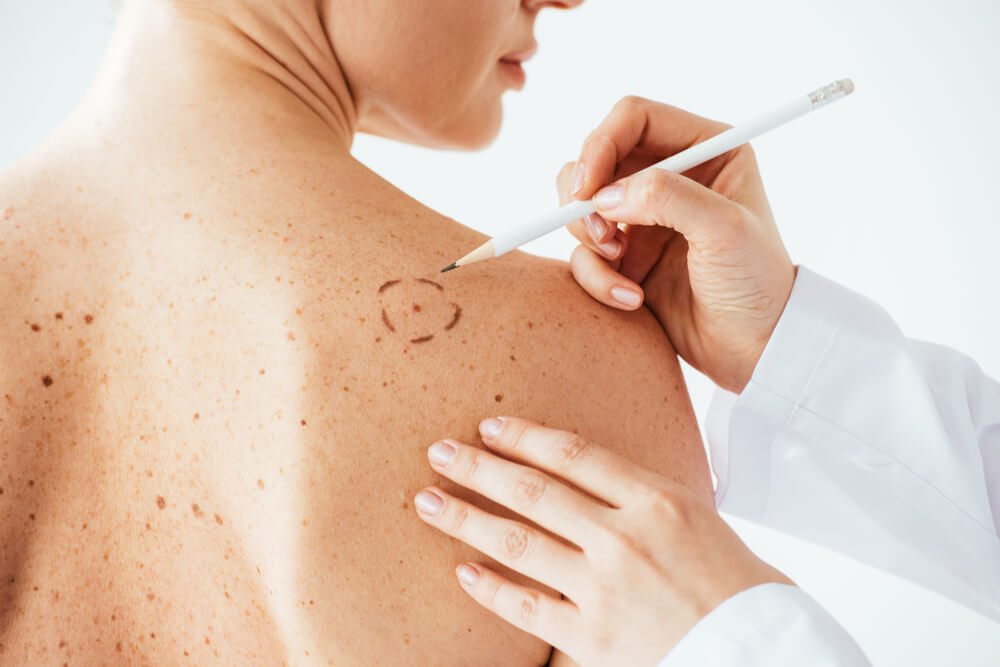
The name Melanoma refers to a kind of skin cancer that begins in the skin’s melanocytes. It can start from a common mole in a region with seemingly normal skin, including in the digestive tract, eye, and other parts of the body.
The reason why this type of cancer is so dangerous is that it can spread to surrounding tissue and from there to parts of the body such as the brain, bone, liver, or lungs. The quicker melanoma is detected, the quicker it can be removed and the higher the chances are for complete recovery.
If you notice a new, colored area anywhere on your skin or see a change in the color, shape, feel, or size of a mole, visit a doctor. The same applies if any skin lesion starts to show signs of becoming cancerous, such as a change in size, color, or shape.
Conclusion
Thank you for reading this article. By now you probably already know more than the general public about the topic of skin lesions. You will at this stage also realize that not all skin lesions are as innocent as they may seem. However, If there is an area we did not cover above, or if you still have questions about some of the topics we did cover, please feel free to leave a comment below. And you are always welcome to visit our website where you will find more information about the services we offer. Bookmark the site in case you ever have a skin lesion that alarms you and you need advice from an expert.


